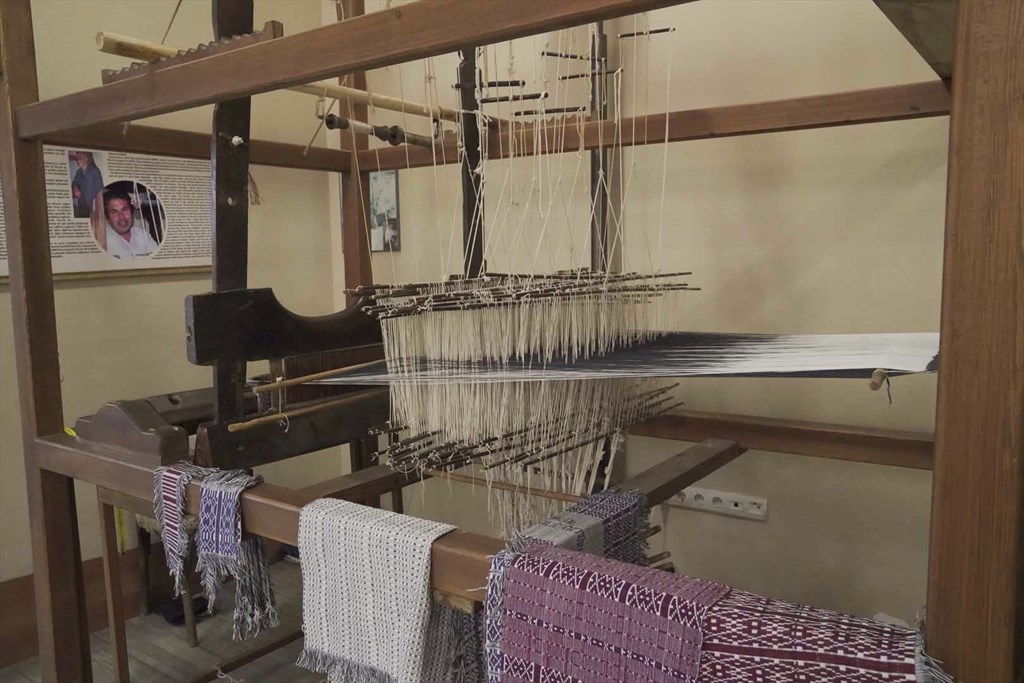Beledi Weaving - G. Yaykol
In Tire, which was one of the centers of sericulture in the past, different fabrics were made with silk as well as wool and cotton threads. Developed in this deep-rooted weaving culture, 'beledi weaving' has had an important place in history as a jacquard weaving technique unique to Tire. Beledi woven fabrics found a wide area of use from the Ottoman palace to the European palaces. Due to its durability feature, the inner garments prepared for the Janissaries were sewn with beledi weaving. Until recently; materials used in home textiles such as clothes and curtains-sofas and bedspreads were prepared with beledi weaving. While production was made on 60 looms in Tire in the early 1900s, beledi weaving is presently kept alive only in Tire Municipality City Museum.
The history
Beledi weaving, unlike other fabric weavings, is woven in two layers and is bi-directional.Three basic sections called 'frame, lockpick and glaze' on the Beledi weaving loom enable the creation of unique patterns of the weaving. By coordinating this triple system at the same time, it is necessary to have long-term experience to accurately create the weave pattern and surface. In weaving; Cotton, woolen and silk threads are used, dyed and colored with madder. Today, municipal weaving with limited number of weavers; In the past it was widely used as a quilt, bed and mattress fabric. It is used in home textiles such as table, bed cover and clothing items such as shawls, vests and ties.













Comments
No comment left, would you like to comment?